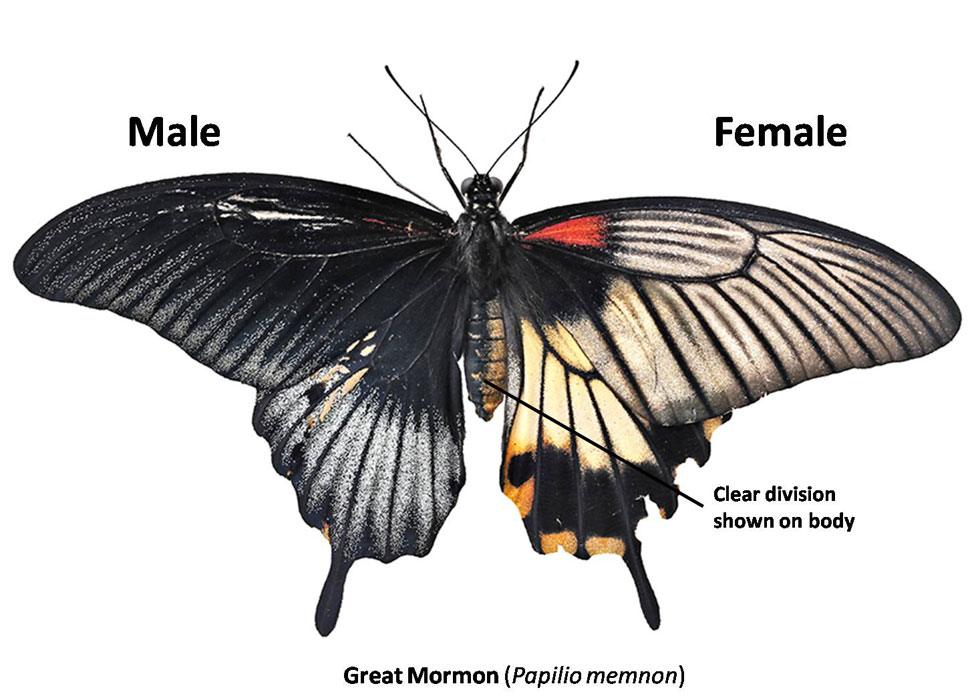Half-and-half male-female Great Mormon butterfly emerges
- Published

The sex division occurs straight down the middle of the butterfly's abdomen
An "extremely rare" half male, half female butterfly, known as a gynandromorph, has been found in Hertfordshire.
The Great Mormon was discovered at Butterfly World in St Albans.
The sex division occurs straight down the middle of the abdomen and is visible in the different wing patterns, with the female half on the right.
Butterfly World said this natural phenomenon occurred in only one in 10,000, or 0.01% of butterflies.
A lepidopterist at the centre, Louise Hawkins, said the phenomenon happens "very early on" in the development of a butterfly when the "sex chromosomes don't divide properly".
It makes the creature infertile and they generally tend to have a shorter life span as their internal organs will be "a bit mixed up".

The female half of the gynandromorph is on the right
"It is fascinating to look at," she said.
"Members of staff keep popping into my office to look at it as no one can quite believe that nature can create something so neat."
The centre said it hopes to have the butterfly on display over the next few days.

Other gynandromorphs

In 2008, retired high school teacher Robert Motz, from Illinois, saw a northern cardinal (pictured) whose breast was exactly half the red of a male, half the grey of a female
On 7 May 1752, a Mr M Fisher of Newgate presented the Royal Society of England with a lobster with "all the parts of generation double"
Dr H. E. Schaef's chicken had a cockerel's bright red comb on one side, but on the left its body was slighter and had plainer markings
Josh Jahner from the University of Nevada, who studies Lycaeides butterflies, said he had never seen a gynandromorph before the 2011 Fukushima Daiichi nuclear disaster in Japan but came across six in the 16 months afterwards
Source: BBC Earth
